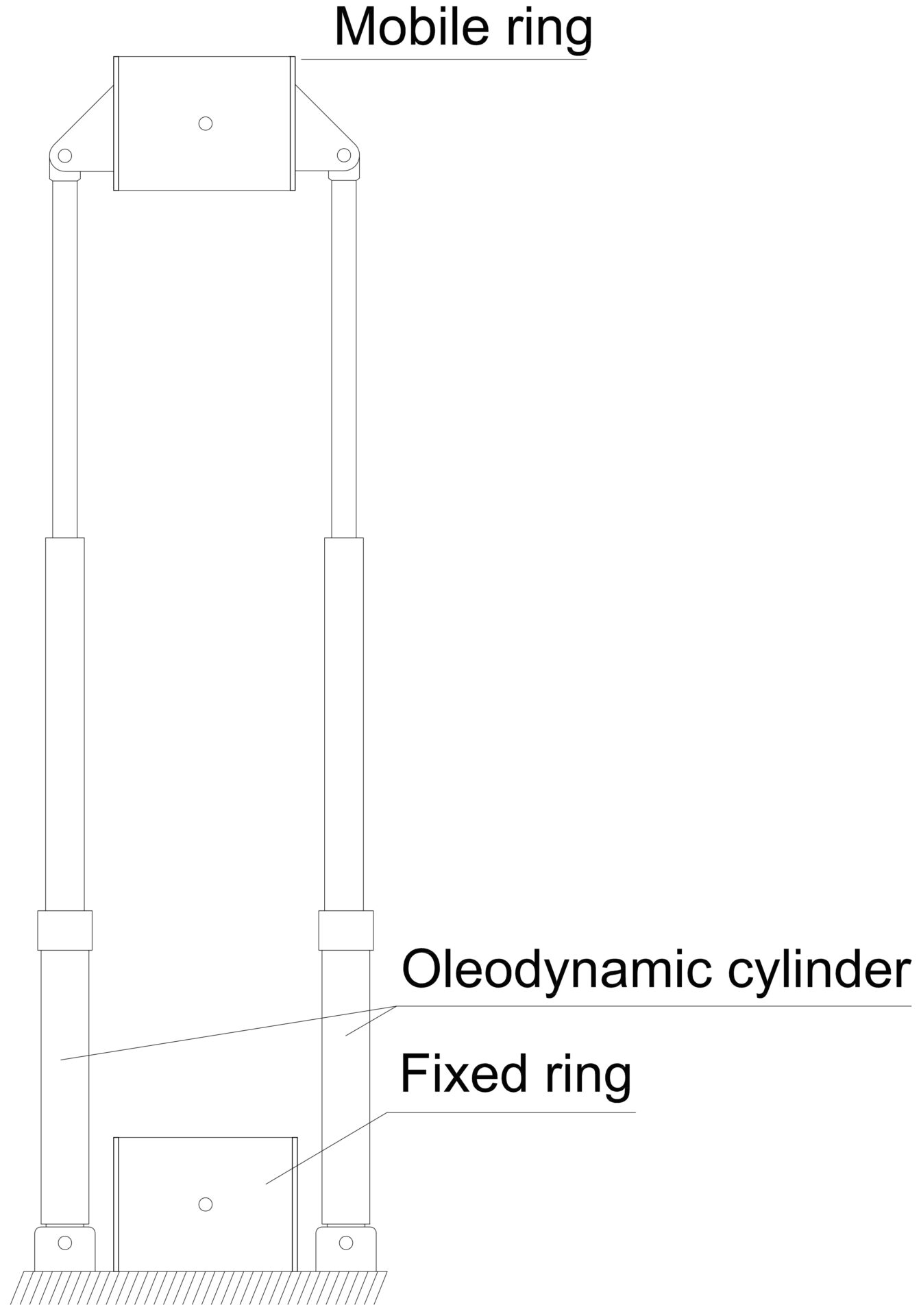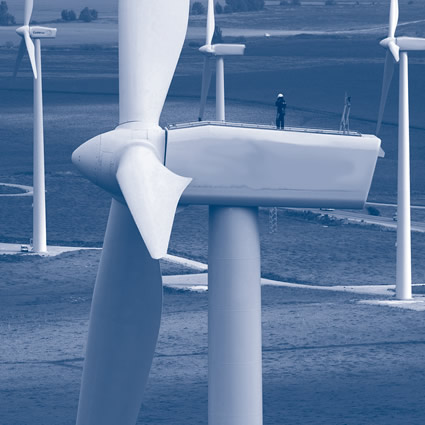|
A partnership of Italian companies and research institutes are starting the PERIMA (Produzione Eolica con Ridotto IMpatto Ambientale) project, co-funded by the POR FESR 2007-2013 European program, which aims to develop a telescopic tower for medium power wind turbines, able to move up and down in a short time and without the use of any external machinery [1].
The length of each tubular element can be set equal to the maximum length allowed for trunk transportation. This length is usually about 10 m. In the example of Fig.1 the tower is split in four elements, one of them kept fixed below the ground level. Each tubular element has two junctions at the ends and slides on the larger element during the rising time through two sets of small carts. One set of carts is fixed on the external side of the lower junction of the moving element, the other one is fixed on the internal side of the upper junction of the larger element. The carts are designed to provide only a small momentum during the rising time, when the blades of the wind generator are kept fixed. A shaft is drilled to host all the tubular elements. All the elements, at rest, are laid on a metallic ring located 1-2 m above the shaft foundation. |
 Fig. 1. Section of telescopic tower. Fig. 1. Section of telescopic tower. |
|
The tower lifting takes place via a piston, which is a pipe with a diameter smaller than the minimum wind tower diameter and a length a bit greater than the length of the extended telescopic structure, which runs along a borehole drilled below the tower foundation. The movement is transferred by the piston to the innermost tubular element, which drags the larger one when the lower junction of the innermost element meets the upper junction of the larger one. Observe that, at work, the load on the tip of the piston is equal at least to the total weight of the tower. Unless horizontal control is given to the piston displacement along its extension, structural stability condition has to be verified. The lifting of the piston is guaranteed for a length of 1-2 m by a couple of oleodynamic actuators. The main case of each actuator and the end of its arm are bound to a pair of rings (Fig. 1.3). Both rings can be either bound or free from the piston by the extension or the retraction of small cylinders entering holes excavated inside the piston (jack-up system). The distance between two holes in the vertical direction along the piston is equal to the maximum displacement of the arm of the actuators. An automatic system guarantees that one of the two rings is always bound to the piston, either to drop the arm after each lifting step or to lift the tower during the lifting (or the dropping) step. |

Fig. 1.3. Lifting system. |
|
The proposed device can be managed in different ways. The first, most extreme way, is to drop the tower along the day and to rise it during the night (‘ghost’ tower). This requires the wind to be strong enough along the night time, which is usually not the case. Another possibility is to rise the tower only immediately before the windy periods matching the electricity demand. Observe that the aptitude of people toward wind plants is more positive during this time, because 1) the movement of people along the country is more difficult, 2) the plant is seen to be working. A third possibility is to rise the tower for all the windy season, for example in winter, and to drop it for the remaining time, for example in summer. This solution is very interesting for touristic locations, like small Mediterranean islands. |
Per ricevere quotidianamente i nostri aggiornamenti su energia e transizione ecologica, basta iscriversi alla nostra newsletter gratuita
e riproduzione totale o parziale in qualunque formato degli articoli presenti sul sito.


 The occurring strong increment of the wind velocity along with elevation requires the wind turbines to be located in exposed places, so that wind turbines and their towers have often a significant impact on the country landscape. This impact, along with the turbine noise and the possible inference of the blades with the bird life is the major issue against further construction of wind energy plants.
The occurring strong increment of the wind velocity along with elevation requires the wind turbines to be located in exposed places, so that wind turbines and their towers have often a significant impact on the country landscape. This impact, along with the turbine noise and the possible inference of the blades with the bird life is the major issue against further construction of wind energy plants.














